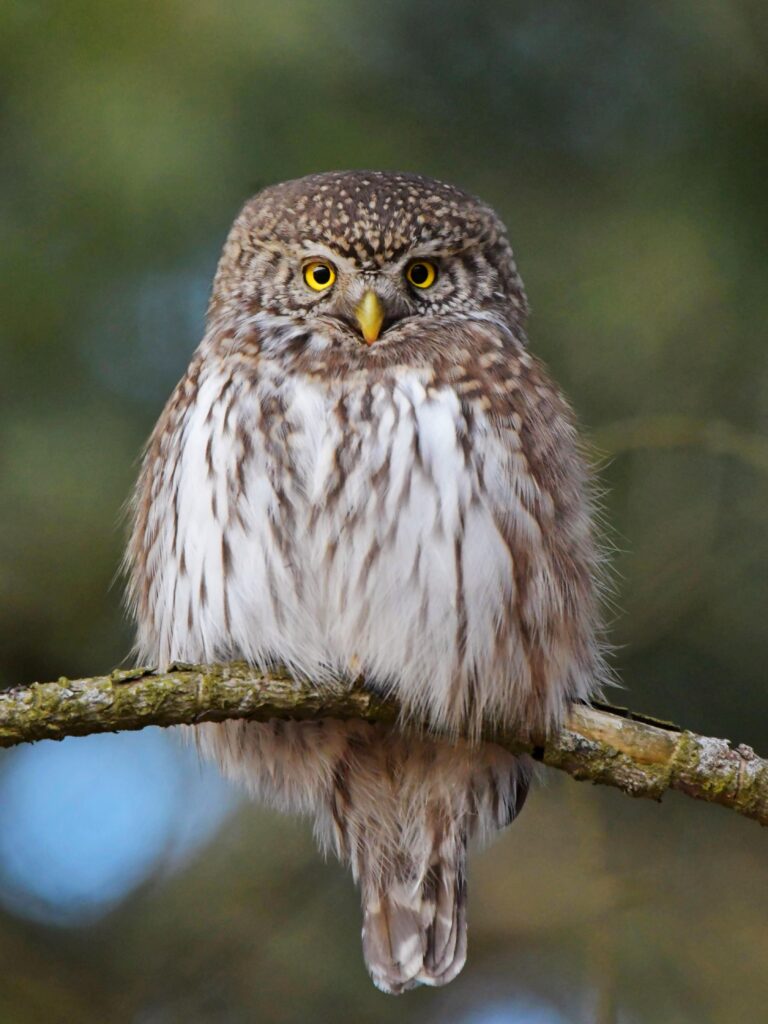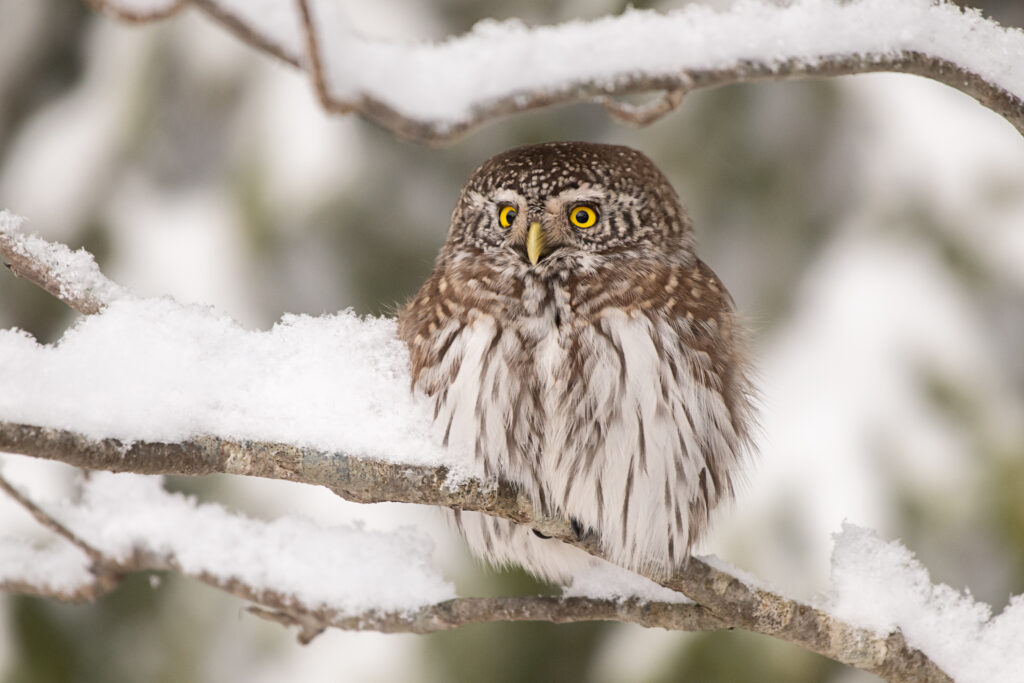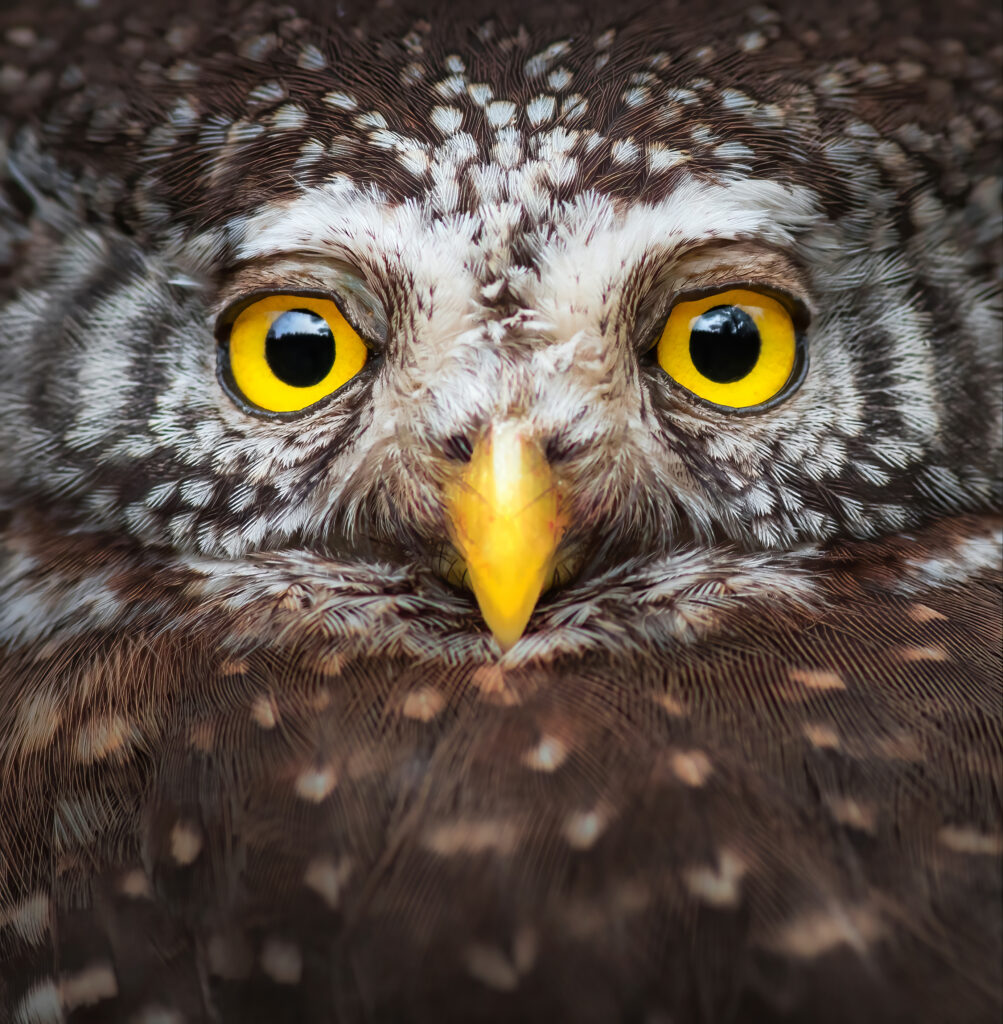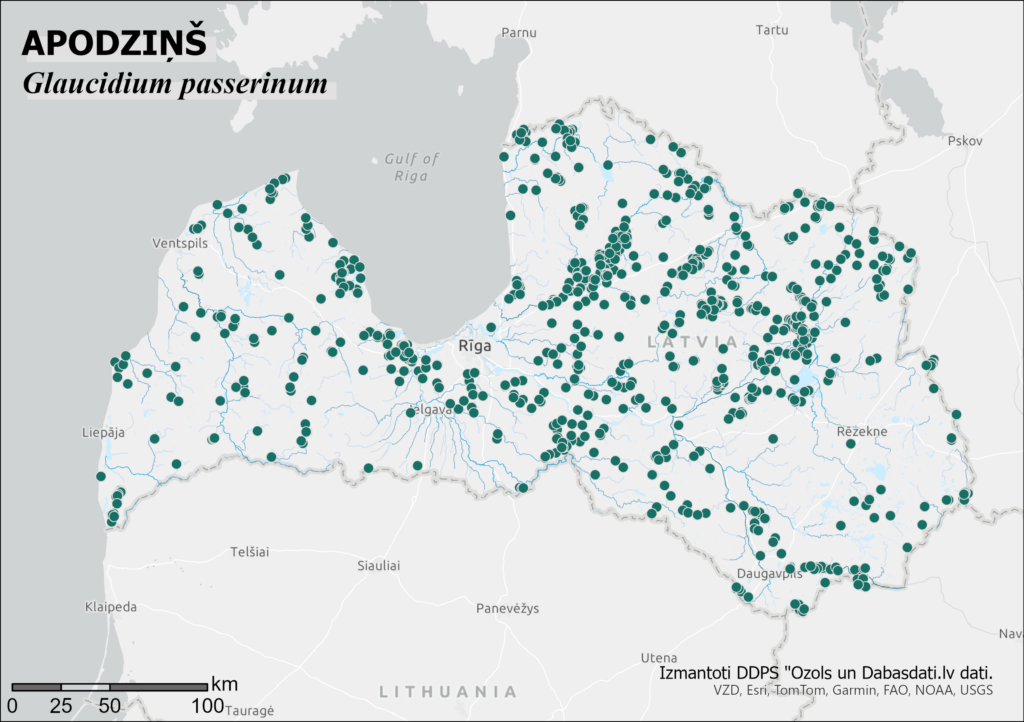Protected species of the month - pygmy owl
Do you know which is the smallest owl species living in Latvia and Europe? It’s this month’s protected species – the pygmy owl (Glaucidium passerinum).






A gallery of photos submitted to the "Green Treasures" photo contest features beautiful images of this tiny owl.
The pygmy owl is truly small—about the size of a starling—with a relatively small, round head. Its back is dark brown with fine pale spots, and its belly is whitish with brown vertical streaks. The facial disc is subtle and mottled. The eyes are yellow, and unlike some other owls, the pygmy owl does not have ear tufts. It has a hooked, greyish-yellow beak and proportionally large feet, which allow it to lift and hold surprisingly large prey. The legs and toes are yellowish with black claws.

This species can be identified by its distinctive calls, which vary seasonally. Both males and females can produce similar whistling sounds. Until the early 21st century, the pygmy owl was considered rare in Latvia, largely because owl surveys were typically conducted at night. However, it was discovered that pygmy owls are most active during twilight hours, when their main prey—voles—are also active. This insight led to a shift in survey methods and helped gather more accurate data on the owl’s presence in Latvia.
The greatest threat to the pygmy owl in Latvia is forestry activity, which destroys its habitat and causes disturbance. Logging during the breeding season can cause nest abandonment. A decline in rodent populations can also negatively affect breeding success. Disturbance from photography or other human activity can also pose a threat. Furthermore, climate change is expected to have a negative impact on Latvia’s pygmy owl population.
In the LIFE FOR SPECIES project, the pygmy owl is classified as a vulnerable species (VU).
